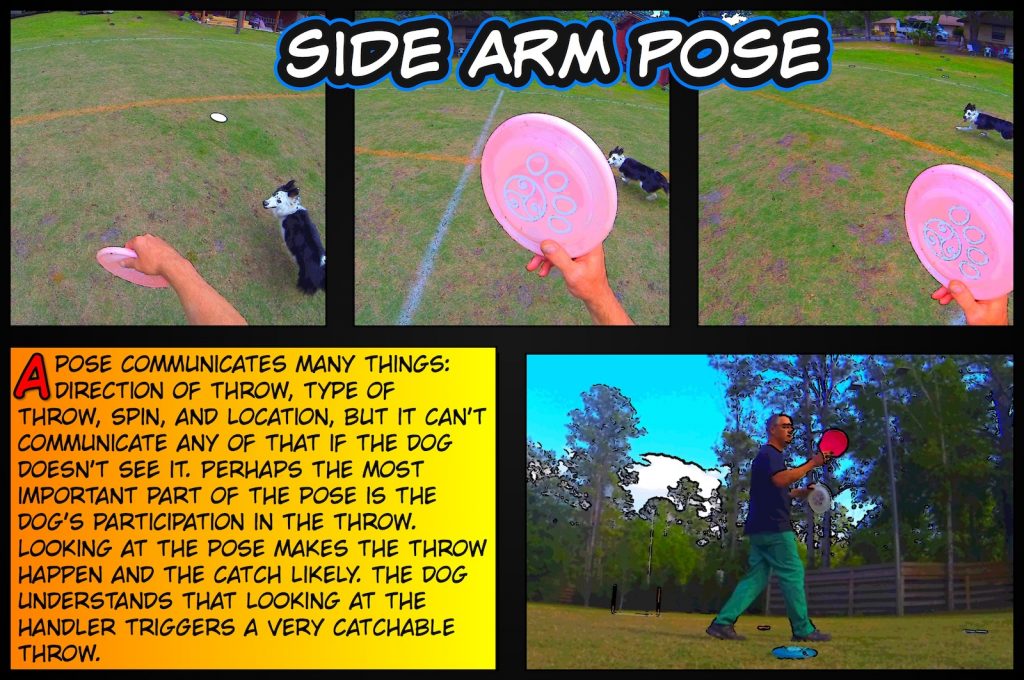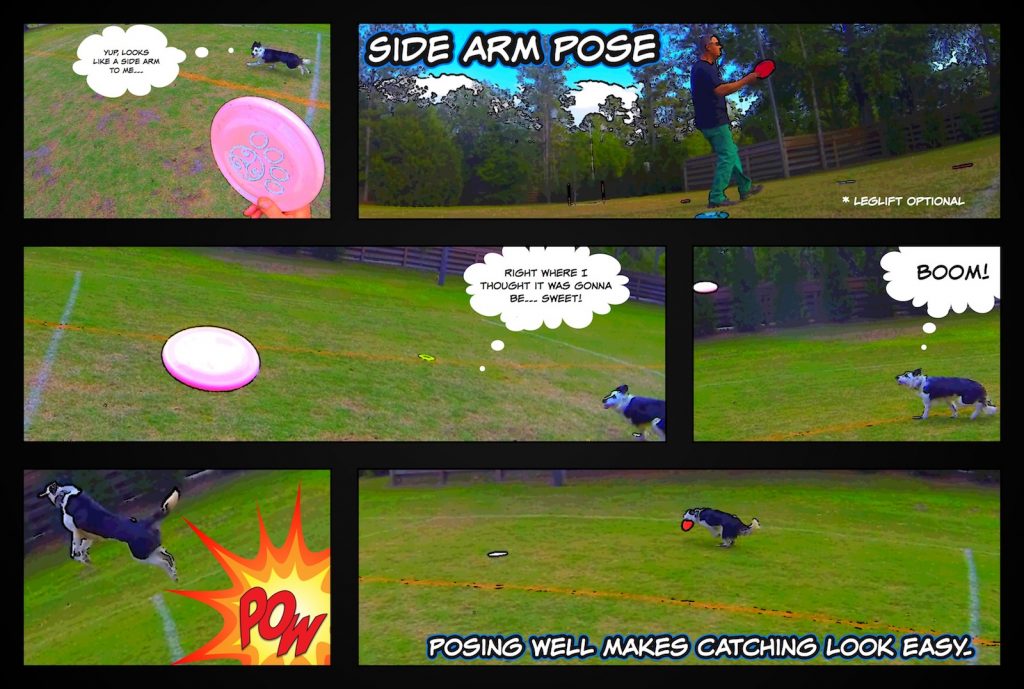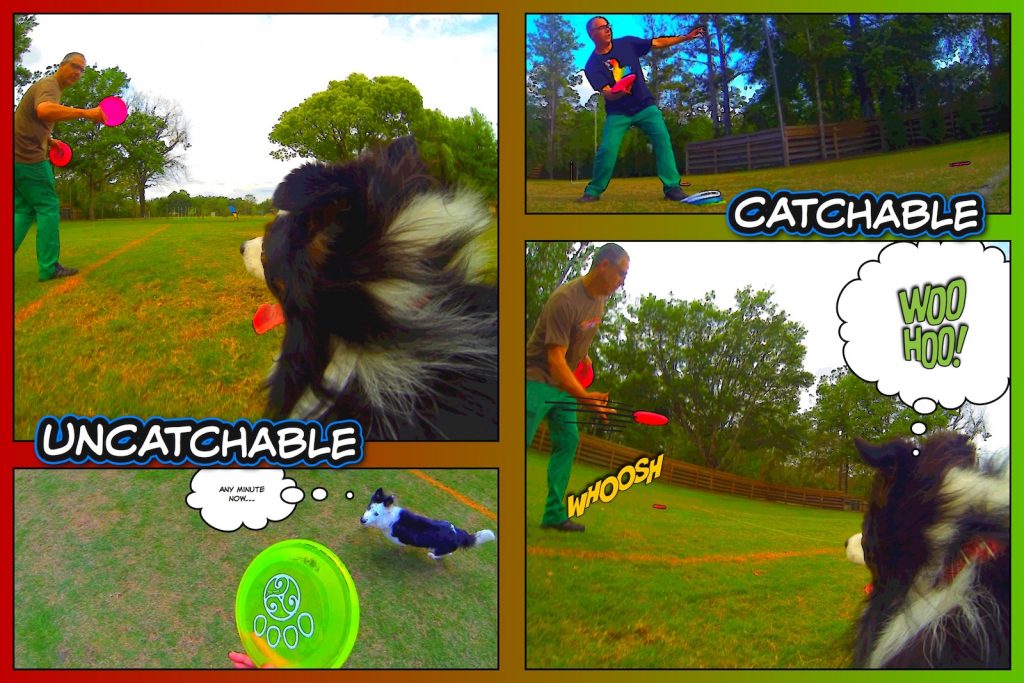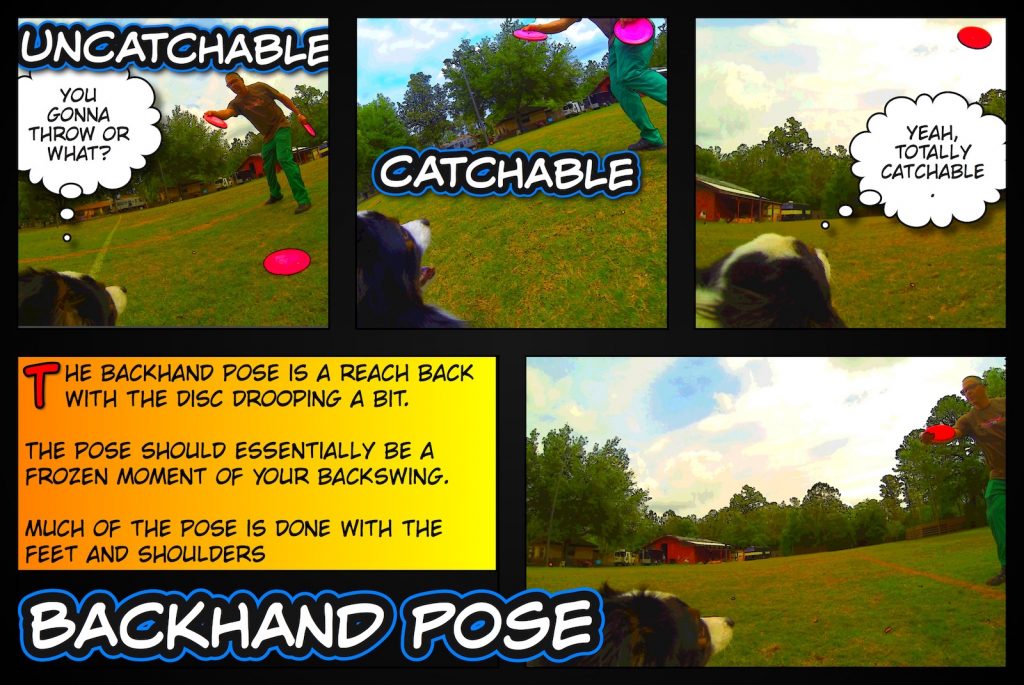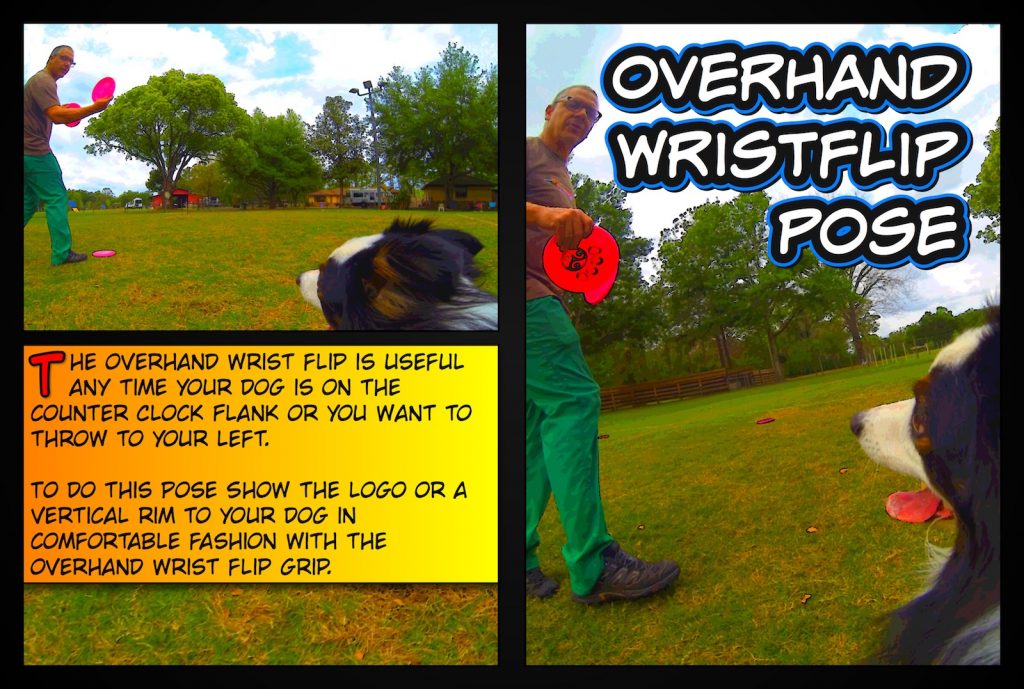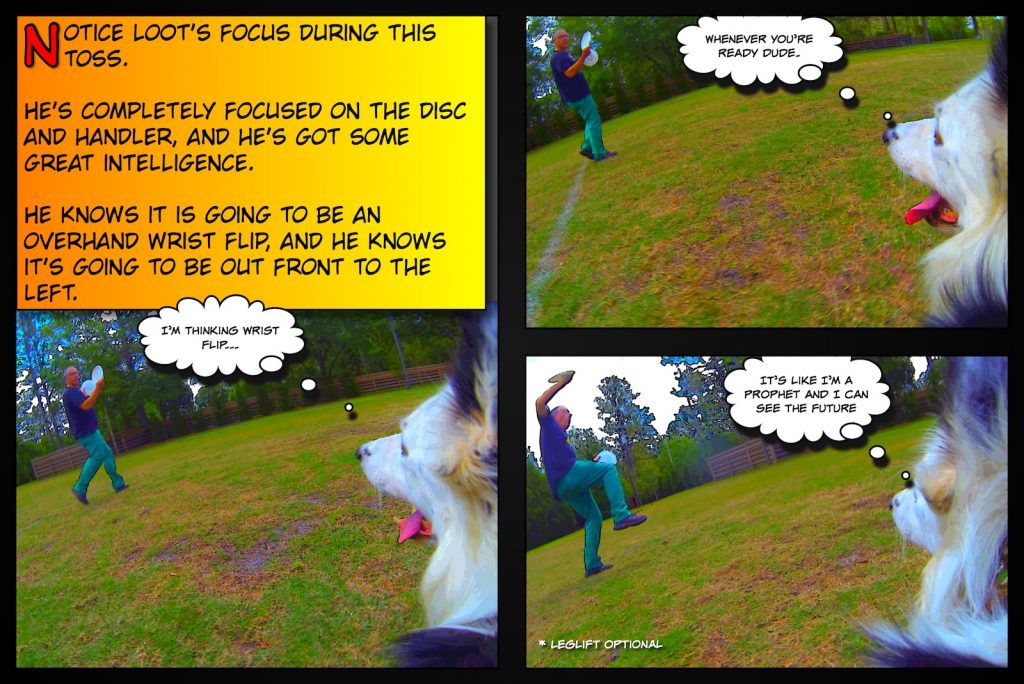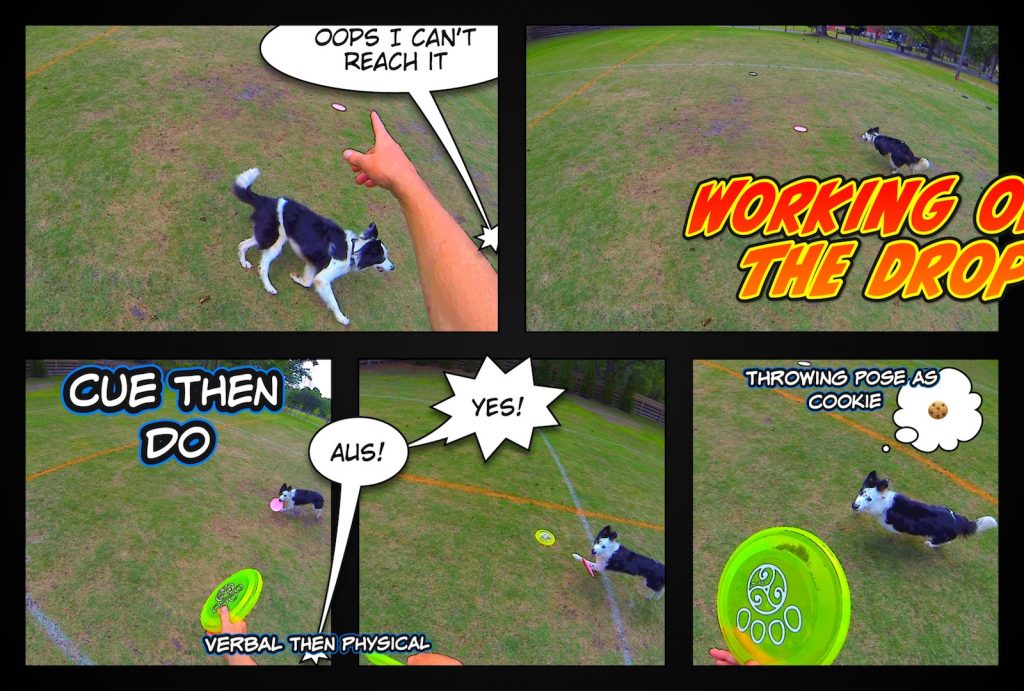Posing is a communication tool for throwing discs to dogs (or people). A pose is a frozen moment of a throw; a key moment of the backswing perhaps, or a flashy presentation of the finish of the throw. This pose cues the dog in on which throw is being made and delivers a general sense of where it is going.
A pose communicates many things: direction of throw, type of throw, spin, and location, but it can’t communicate any of that if the dog doesn’t see it. Perhaps the most important part of the pose is the dog’s participation in the throw. Looking at the pose makes the throw happen and the catch likely. The dog understands that looking at the handler triggers a very catchable throw.
A pose is a very strong drop cue. In the Yachi Method, the pose is the drop cue, no verbals allowed. It means stop, drop, and wait. While the pose reliably cues the drop, at Pawsitive Vybe we just put a verbal in front of it for verbal redundancy, disc management, and flatwork purposes.
The wait part of the equation for us is kind of interesting. If you think of the working flank as a moving wait, then it all makes sense and fits. If not, then it’s kind of complicated. We use posing to suit our handling style and training philosophy. You should do the same.
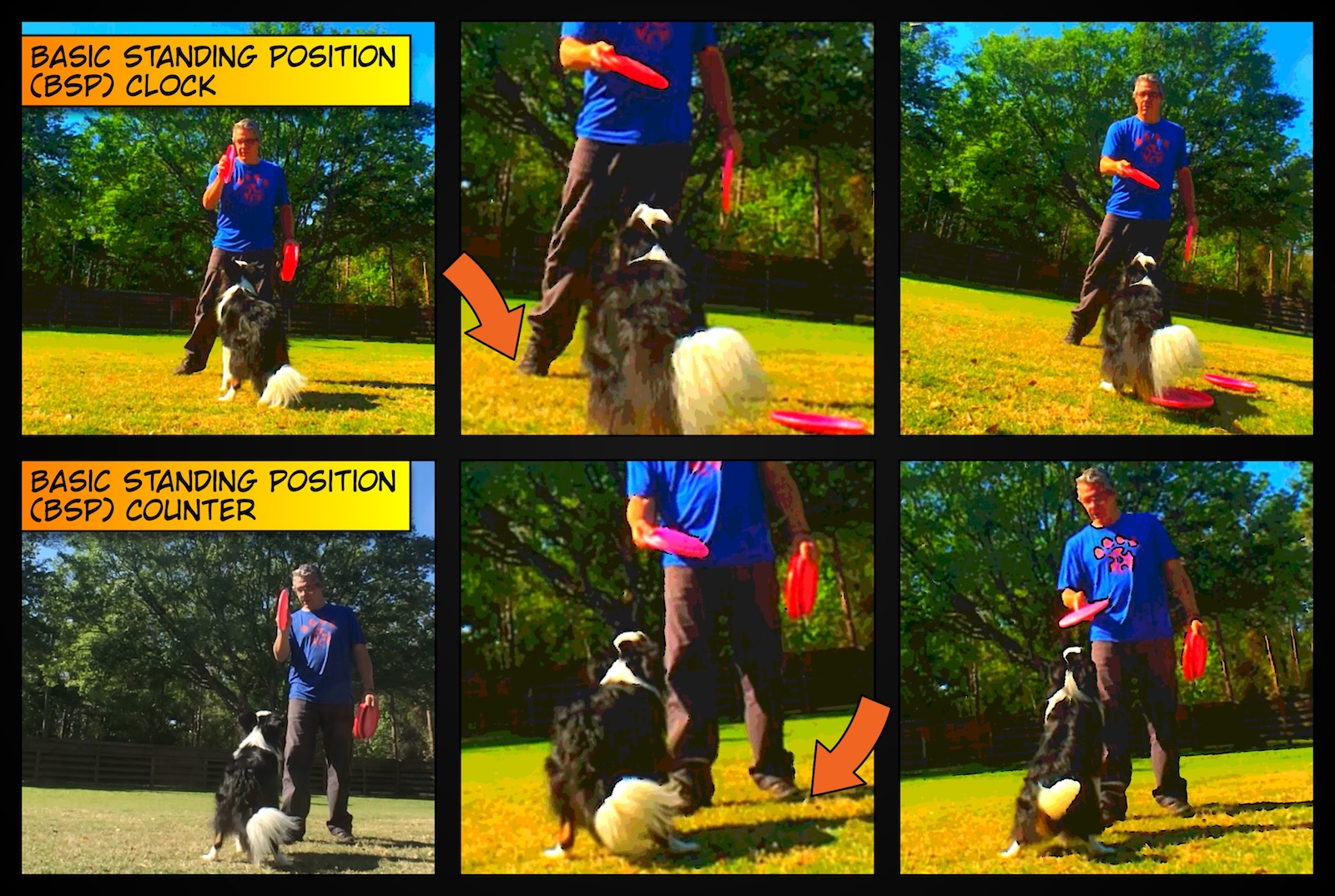
Posing in BSP
Aligning the disc to the center of the body with the left foot visibly forward and inline with the right heel creates BSP Clock, or Basic Standing Position Clock.
This position communicates clockwise movement or the clockwise flank to the dog. It tilts the shoulders and body in the clockwise direction and sucks the dog into the pocket in front of the handler.
If the handler is throwing with the right hand it can create a strong clockwise bias. With the disc lined up with the feet, a line of pressure is created that makes the counter clockwise flank or counter clock movement unappealing to the dog. The shoulders are obviously not going to move left for the throw, and I think the dogs readily understand that nobody is going to throw over there. They will cheat clockwise.
Of course this is completely based off of a standard backhand grip. If your dog knows the overhand wrist flip and you’re holding the disc with your fingers on top, the dog might not buy your clockwise set up. But then you would be in some different flavor of BSP, something non-BSP…
Side Arm Pose
The Side Arm throw is a Snap Throw. It’s almost always a sharp popping motion forward or to the left of the right handed handler. Because it spins counter clockwise it is primarily thrown to a dog on the counter clockwise flank; a dog that is moving from right to left.
Usually when this throw is made, the handler lifts the disc vertically, as shown in the images, and shows the bottom of the disc to the dog on the counter clockwise flank. This is a natural piece of the throwing motion. As soon as that disc pops up, the dog knows it’s going to be a Side Arm throw and starts looking for other cues from the pose.
The handler’s feet and focus are, again, critical. You should familiarize yourself with the 13 Laws of Flatwork. They are in effect… in spades! The location of the throw is often defined by where the handler is looking and the orientation of the lower body on the pose. It is far more than simply pointing in the direction you will throw (although that often works…)
Catchable & Uncatchable
A pose with a disc plays on catchable vs uncatchable. A dramatic pause with a very clean release; a well posed throw winds up being a perfect team operation. As the dog sees the pose, in this case a Side Arm throw, all of the perfinent information required to catch is communicated immediately: it’s a Side Arm; he’s pointed in that direction; he’s still working with me, better chill out here…
When the handler wants to throw after setting a pose, the experienced dog will be actively looking in at the handler as they hold position waiting for the disc to move from uncatchable to catchable.
Freeze the Backswing
Basic Standing Position (BSP)
Basic Standing Position is a fairly standard disc dog position; dog standing in front of the handler who is standing with a disc presented in vertical fashion. While it is a standard position it may or may not be “proper”.
At Pawsitive Vybe we used BSP for years like most other disc dog freestyler’s out there, but not as a clear and distinct concept. It was brought to our attention via the Hirai Camp in NH in 2017, and is a featured concept of the Yachi Method disc dog handling method.
In Yachi method, BSP means stop, drop, and wait. It’s a powerful tool for position, movement, and timing.
We use a verbal drop cue and distinct physical cues (Throwing Poses) to communicate drop. This is not a small distinction in methodology.




